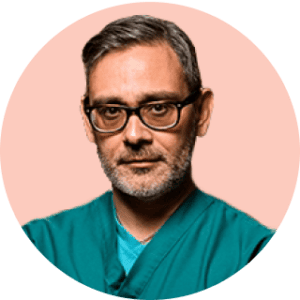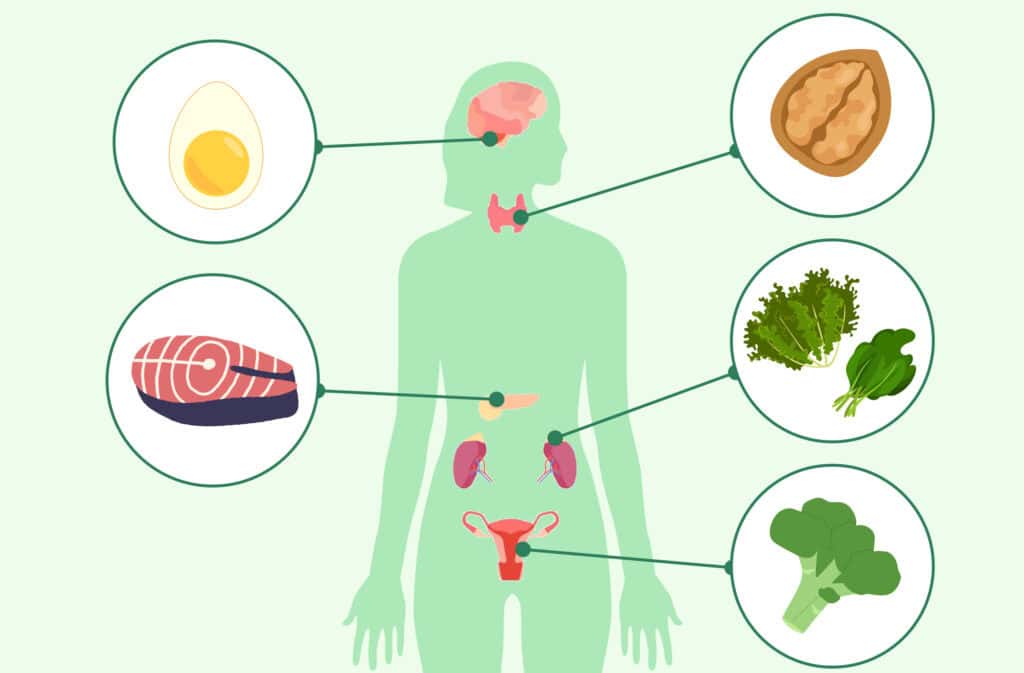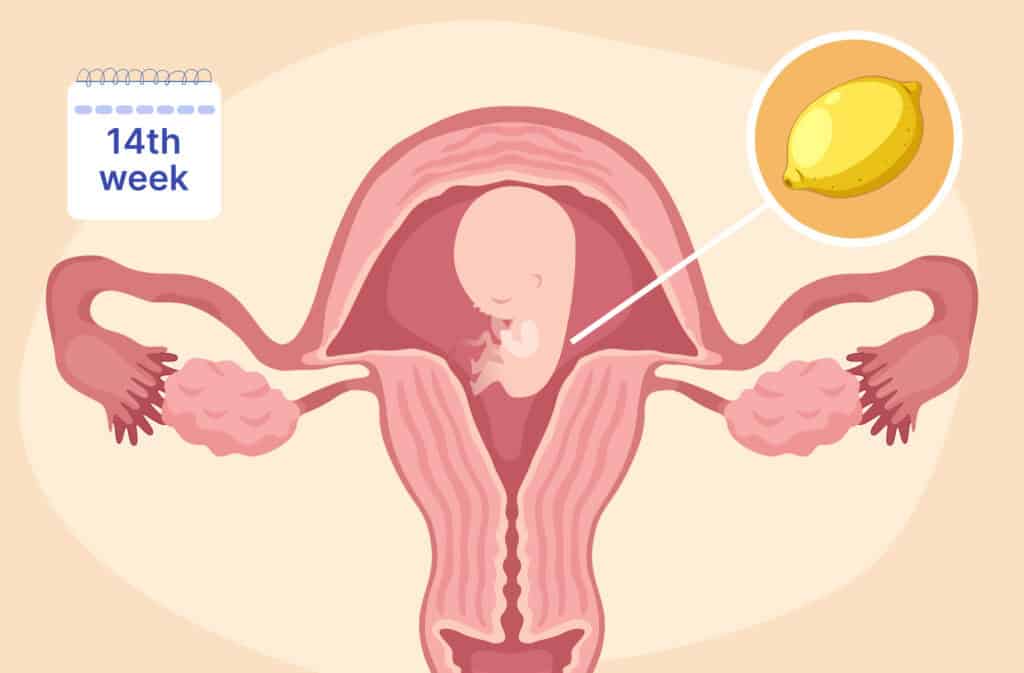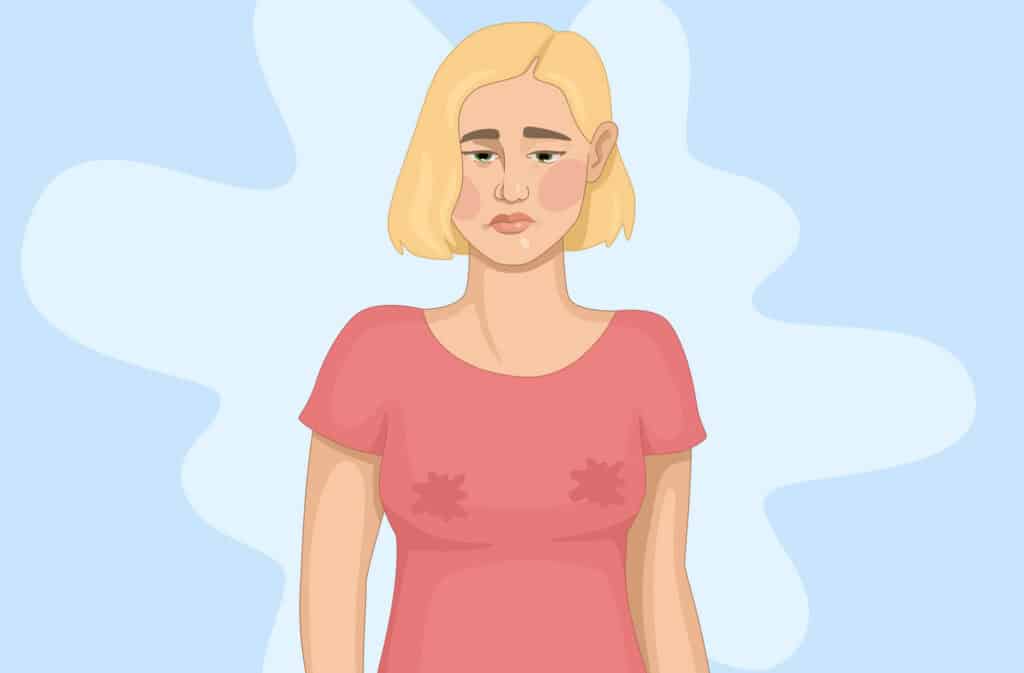Femia > Health Library > Getting Pregnant > Trying to conceive > Discharge after ovulation: Could it be a sign of pregnancy?
Discharge after ovulation: Could it be a sign of pregnancy?

- Updated Feb 25, 2025
- Published
CRAFTED BY HUMAN
Crafted by human At Femia, we provide accurate and up-to-date information at every stage of your journey, from trying to conceive, pregnancy and postnatal support. All content is created by a real person based on in-depth research and own professional experience. Femia ensures that you will receive expert advice, strict accuracy and a personalized approach from our authors/medical experts. Learn more about our editorial policy.
FACT CHECKED
Fact checked At Femia Health, we maintain the highest standards of editorial excellence in delivering content focused on helping you conceive, guiding you through pregnancy, and supporting you postpartum. Explore our content review principles to learn how we ensure the accuracy and quality of our health and lifestyle tips for every stage of your journey.

Created with Hector Chapa, MD, FACOG, Clinical associate professor, Obstetrics and Gynecology Texas A&M University, College of Medicine in Bryan-College Station, USA
- Vaginal discharge changes throughout your menstrual cycle, with clear, slippery discharge during ovulation to help sperm reach the egg.
- After ovulation, discharge typically becomes thicker and white.
- You might notice a thin watery, or clear or milky white discharge after ovulation if pregnant.
- While tracking discharge can provide clues, a pregnancy test is the most reliable way to confirm pregnancy.
Vaginal discharge plays a vital role in your reproductive health. It keeps your vagina clean, moist (sorry), and free from infection. It also plays a crucial role in reproduction. During non-fertile times, your cervical mucus may be thick and sticky to prevent sperm from reaching your cervix.
During your fertile window, however, the cervical mucus becomes a red carpet for any visiting sperm. Your vaginal discharge during ovulation will be wet and slippery, essentially acting as a DIY slip-and-slide to help sperm reach the egg.
After implantation, early pregnancy discharge can appear as a milky white, watery fluid, and you will notice that the amount of vaginal discharge you produce increases as the pregnancy progresses. It can take time for the hormones of early pregnancy to impact your vaginal discharge, so this may not be one of the earliest pregnancy symptoms you notice. In fact, for many women, increased vaginal discharge starts after they already know they are pregnant.

Discharge after ovulation: What to expect if pregnant
Vaginal discharge varies between women, which is why tracking your cervical mucus is so helpful. Knowing what’s normal for you will tell you when something unusual happens. Increasing progesterone at this time changes your cervical mucus. Usually, the quantity of cervical mucus reduces after ovulation and may change to a thicker, paste-like consistency. The color will likely be clear or milky white as you enter this final stage before your period.
If you’re pregnant, your vaginal fluid won’t thicken. Instead, it will stay watery or creamy, thanks to your changing hormones. This subtle change isn’t very noticeable, so many women overlook these changes.
White discharge after ovulation: a pregnancy sign?
White discharge (leukorrhea) is expected after ovulation and isn’t necessarily a sign of pregnancy. Cervical fluid usually decreases immediately after ovulation and returns with a thicker consistency.
So, what color is discharge after ovulation if pregnant?
Cervical fluid during pregnancy is usually milky white or clear. There’s usually a delay before a noticeable increase in vaginal discharge after ovulation if pregnant.
👉Find out more: What are the chances of getting pregnant from precum while ovulating?
Discharge before period vs early pregnancy
The white, paste-like discharge will continue until your period. During your period, discharge reduces—though it’s hard to tell when you’re having a period.
On the other hand, increased estrogen levels in pregnancy cause a corresponding increase in vaginal discharge, though it’s not an easy pregnancy sign to spot. The discharge of early pregnancy might be creamy, white, or clear. You need to be an expert in your usual cervical mucus to spot the slight changes of early pregnancy, but the clues are there if you know where to look.
Cervical mucus: ovulation vs pregnancy discharge
The cervical mucus associated with ovulation is easy to decipher because of its unusual consistency. While your discharge may change throughout the month, it will take on a slippery consistency around ovulation, similar to that of raw egg yolk. This slippery, stretchy discharge acts as an aid for sperm, helping them get quickly to the waiting egg.
What happens to discharge after ovulation if pregnant?
Pregnancy discharge won’t share the slippery consistency of ovulation discharge. Pregnancy discharge might be thin, watery, clear, or white.
You will experience more discharge during pregnancy as a result of your hormones. This increase in discharge during pregnancy is considered a natural defense against infection.

Vaginal discharge after implantation: What’s normal?
After implantation, pregnancy hormones will start to ramp up, and you’ll likely notice some early pregnancy symptoms, such as breast tenderness, sickness, and fatigue. You may also notice increased vaginal discharge around this time (get used to it, because that’s a common pregnancy symptom).
Some women also experience implantation bleeding around the time their period is due. This bleeding occurs when the blastocyst embeds itself in your uterine wall. Implantation bleeding is described as “spotting”; it’s not usually as heavy as a period, though it can last a day or two.
How to check cervical mucus
You can check your cervical mucus throughout the month to get an idea of where you are in your cycle. Once you know what to expect from your body, checking your cervical mucus after ovulation may even help you find out whether you are pregnant. Avoid checking your mucus for 14 hours after unprotected sex, however, or you’ll likely be inspecting semen, which could confuse your results.
There are several ways to check your cervical mucus. You can:
- Insert a clean finger into your vagina, and examine any discharge on your finger once removed;
- Wipe yourself with toilet paper before peeing, and inspect any mucus on the toilet paper;
- Look in your knickers for signs of discharge.
During your period and for a couple of days after, you won’t produce much discharge. After that, you may notice a cloudy, sticky discharge. This discharge is thick to prevent sperm from passing through the cervix.
👉Find out more: Toxic metals found in tampons: What you need to know
Next, you will produce a creamy white or yellow-tinged discharge. This creamy substance makes it difficult for sperm to move easily, so it is considered a non-fertile discharge.
In the days leading up to ovulation, your vaginal discharge will become clear and slightly slippery. This discharge provides a more hospitable environment for any sperm who happen to call in.
During the ovulation phase of your menstrual cycle, your vaginal discharge will want to give sperm a helping hand up to your ovaries, where they can find an egg. During this phase, your cervical fluid is thick, clear, and slippery like egg white. If you hold some on two fingers and slowly stretch your fingers apart, the mucus will stretch between your splayed fingers before springing back. You will likely produce a large amount of this discharge.
After ovulation, you will likely notice a decrease in vaginal discharge if you’re not pregnant. Your discharge may be white, creamy and sticky. If, however, you are pregnant, you may notice your vaginal discharge doesn’t decrease or turn white, because estrogen levels don’t drop as they would during a typical menstrual cycle. The cervical fluid of very early pregnancy may stay clear or milky white, giving a clue that conception has occurred.
Other signs of pregnancy
If your period is late, you’re likely wondering whether you might be pregnant. Pregnancy isn’t the only reason why your period might be late (or missed altogether), however. It could also be down to:
- Stress
- Some hormonal contraceptives
- Breastfeeding
- Polycystic Ovary Syndrome
- Being overweight
- Perimenopause
- Excessive exercise
- Sudden weight loss
You may also have irregular periods, making it difficult to estimate the arrival day of your period each cycle. People often discuss menstrual cycles as being 28 days, but in fact, anything between 21 and 35 days is considered normal. Some women find that their period arrives like clockwork each month, whereas others find their cycle length varies between cycles.
If you think you might be pregnant, you should wait until the day of your missed period before taking a home pregnancy test. The tests are more reliable this way, so you’re more likely to get it right the first time. Ensure that you read the instructions before taking the test, because the test will only be reliable if taken properly.
Not all women notice the discharge changes of early pregnancy, so here are some other symptoms of early pregnancy to look out for:
- Sore and bigger breasts
- Tiredness
- Nausea and sickness
- Needing to pee more often
- Food cravings and aversions
If you notice any of these symptoms, you should take a pregnancy test to see if you are pregnant.
What else can change cervical mucus?
The hormonal fluctuations of your cycle change the color and consistency of your vaginal fluid. Whether you notice these changes or not is likely down to whether you track your cycles and pay close attention to your symptoms as you move through your menstrual cycle. Modern lives are busy, and it’s easy to overlook these patterns unless you pay close attention.
It’s not just hormonal fluctuations that can alter your cervical mucus, however. Changes could also be down to:
- Medications
- Hormonal contraceptives
- Changes in your health
- Feminine hygiene products
- Stress
- Sex
- Breastfeeding
- Lubricating products used during sex
- Infections
When to consult a doctor
Vaginal discharge changes throughout your menstrual cycle, and it’s a great symptom to track if you want to get to know your cycles better. For example, looking out for the slippery egg-white mucus of ovulation can help you time when to have sex to increase your chance of conception. As your hormones fluctuate throughout your cycle, your vaginal discharge may change colour and consistency.
Sometimes, a change in discharge can be a sign of an underlying health condition. If you’re worried about a change, you should consult your doctor. Your doctor will be able to diagnose and treat the condition, so the sooner you seek medical help, the better.
Here are some of the possible health conditions associated with changes in vaginal discharge:
| Discharge | Potential condition | Treatment |
|---|---|---|
| Thick, white discharge similar to cottage cheese | Thrush | Antifungal medication |
| Green, yellow or frothy | Trichomoniasis | Antibiotics |
| Foul, fishy smell | Bacterial vaginosis | Antibiotic gel or cream |
| Yellow tint and a foul smell | Chlamydia | Antibiotics |
| Thick green or yellow | Gonorrhea | Antibiotic shot |
| Mild odor accompanied by blisters or sores | Genital herpes | Antiviral medication during flare ups |
Questions from Femia community
Can I have discharge changes if I’m not pregnant?
Yes, vaginal discharge changes throughout your cycle as your hormones fluctuate. If you track your symptoms, you will notice patterns to how your vaginal fluid changes throughout the month. At some points, your cervical fluid will be thicker and sticky to prevent sperm from passing through your cervix. During your fertile window, you will notice your vaginal discharge becomes slippery to make it easy for the sperm to travel through.
What does it mean if my discharge is yellow or green?
Sometimes, vaginal discharge can appear to have a yellow tint, and this is nothing to worry about. However, if your vaginal discharge looks yellow (not merely yellow-tinted) or green, this could be a sign of infection. It’s always worth getting any changes in discharge checked out by a doctor. Pay attention to the color (yellow and green are bad) and the smell (healthy discharge shouldn’t have a scent), as these can be signs of infection.
Can early pregnancy discharge be accompanied by odor?
No, vaginal discharge shouldn’t have an odor. If you notice that your vaginal discharge has an odor, you should consult your doctor, as this can be a sign of infection that may require treatment.
The bottom line
Some women notice changes in their cervical fluid during early pregnancy. Estrogen levels after ovulation are higher in a conception cycle than in a regular cycle. This can impact cervical fluid by keeping it transparent rather than becoming white and sticky. Most women probably wouldn’t notice this slight change, but if you are trying to conceive and are paying close attention to your cervical fluid, you might notice the mucus changes of very early pregnancy.
Unfortunately, it’s easy to drive yourself mad obsessing over the slight bodily changes that may indicate pregnancy. If you desperately want to be pregnant, you’ll likely want to know as soon as possible. While some early pregnancy symptoms might act as clues, you won’t know for sure until you’ve taken a pregnancy test.
Though it can be difficult, the best thing to do during the two-week wait is to take your mind off it. Schedule some social events to look forward to, and try to keep yourself distracted. If you think you might be pregnant, take a test on the day of your missed period.
References
- Reed BG, Carr BR. The Normal Menstrual Cycle and the Control of Ovulation. [Updated 2018 Aug 5]. In: Feingold KR, Anawalt B, Blackman MR, et al., editors. Endotext [Internet]. South Dartmouth (MA): MDText.com, Inc.; 2000-. Available from: https://www.ncbi.nlm.nih.gov/books/NBK279054/.
- Chappell, Catherine A et al. “The effects of reproductive hormones on the physical properties of cervicovaginal fluid.” American journal of obstetrics and gynecology vol. 211,3 (2014): 226.e1-7. doi:10.1016/j.ajog.2014.03.041, https://pubmed.ncbi.nlm.nih.gov/24662718/.
- ACOG. 2020. Is it normal to have vaginal discharge? The American College of Obstetricians and Gynecologists. https://www.acog.org/womens-health/experts-and-stories/ask-acog/is-it-normal-to-have-vaginal-discharge [Accessed September 2024].
- Evans-Hoeker, Emily et al. Cervical mucus monitoring prevalence and associated fecundability in women trying to conceive Fertility and Sterility, Volume 100, Issue 4, 1033 – 1038.e1 https://www.fertstert.org/article/S0015-0282(13)00696-1/fulltext.

Discover natural strategies, tips, and medical guidance on how to balance your hormones in a week with diet, lifestyle, self-care tips, and supplements.

Explore week 14 pregnancy symptoms, baby size, bump progress, and how to care for your skin and health.

Learn how to lower prolactin levels naturally and with medical treatments to improve fertility. Discover causes, symptoms and practical tips to support conception.
